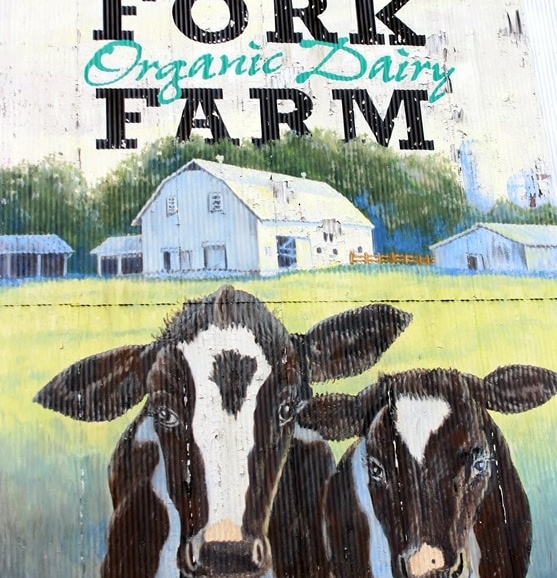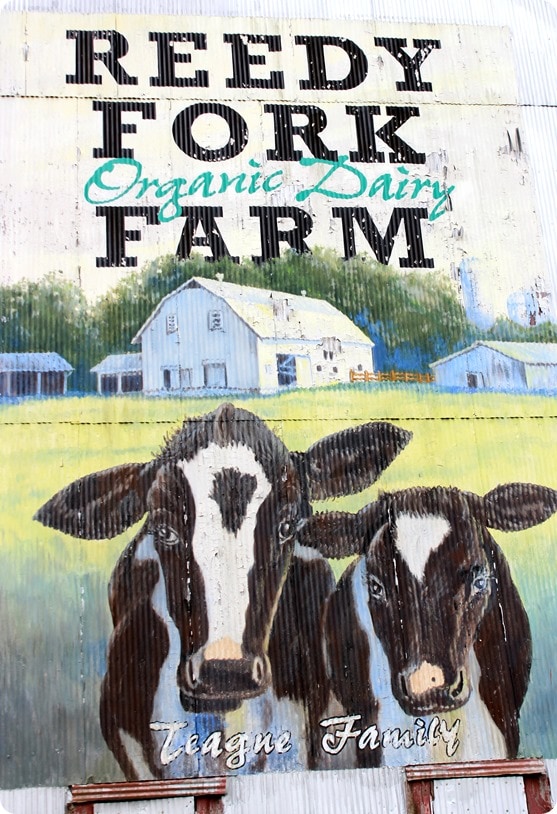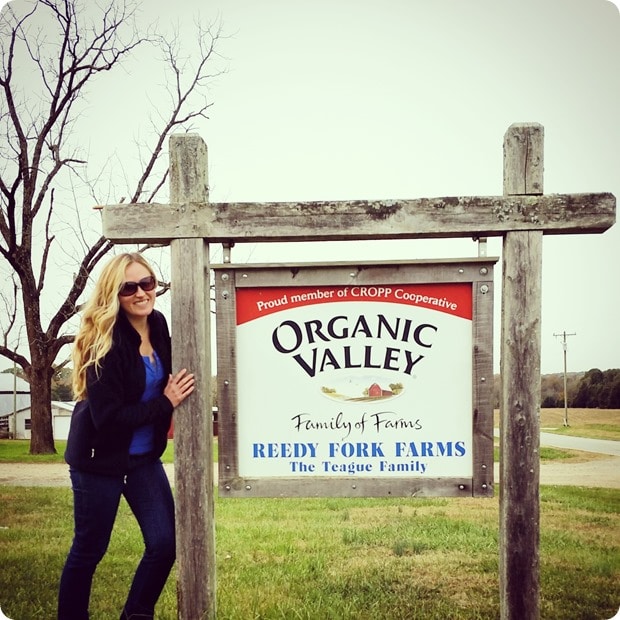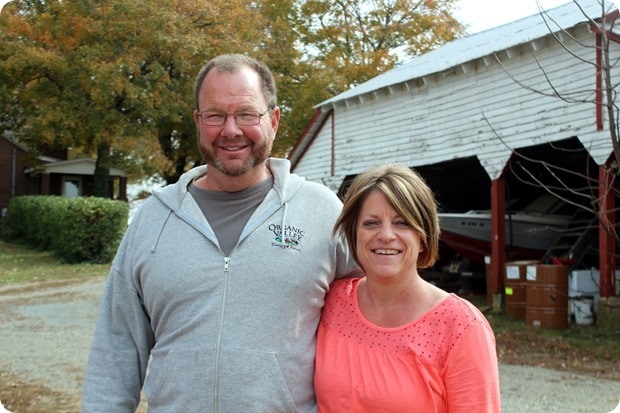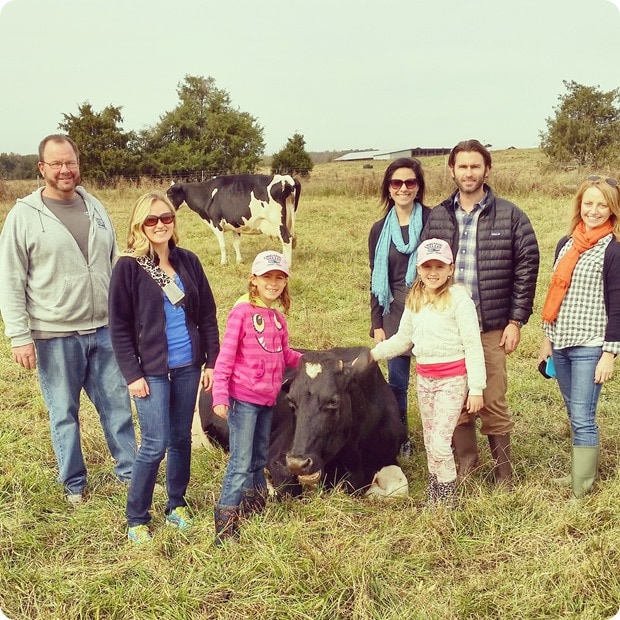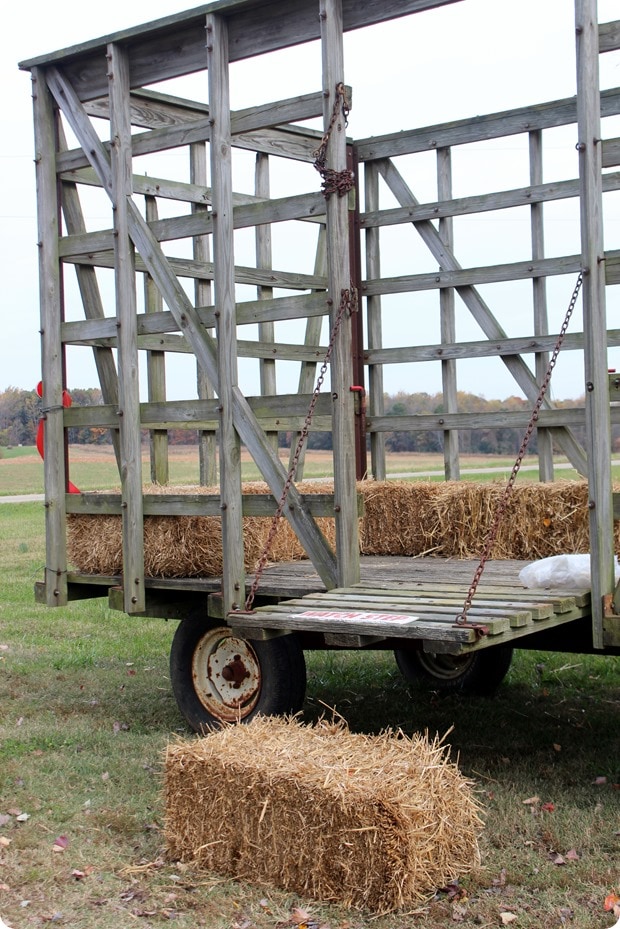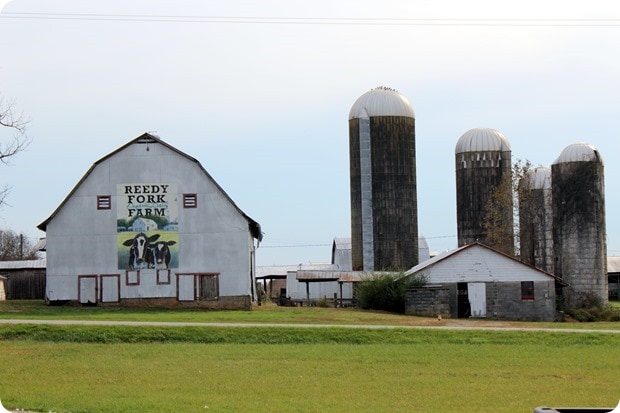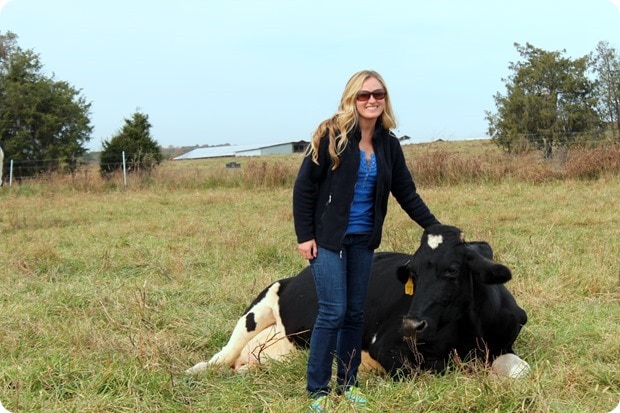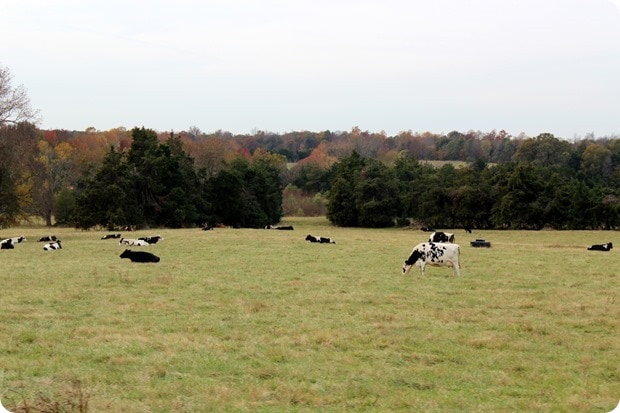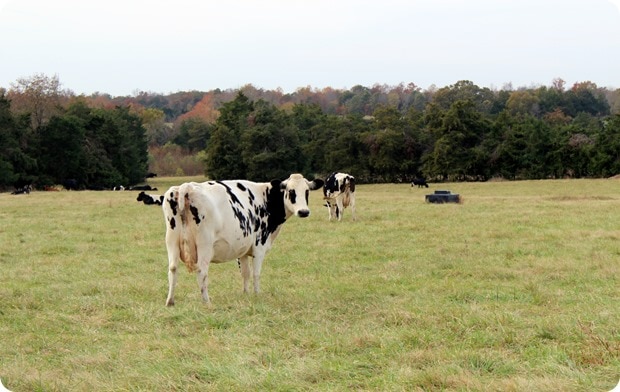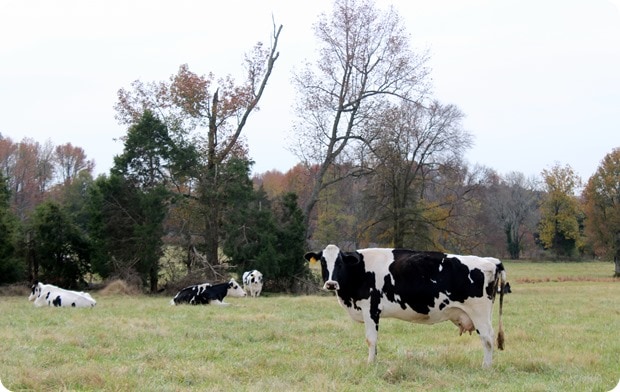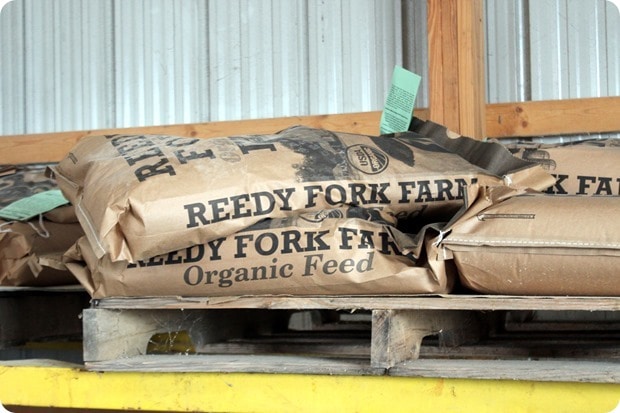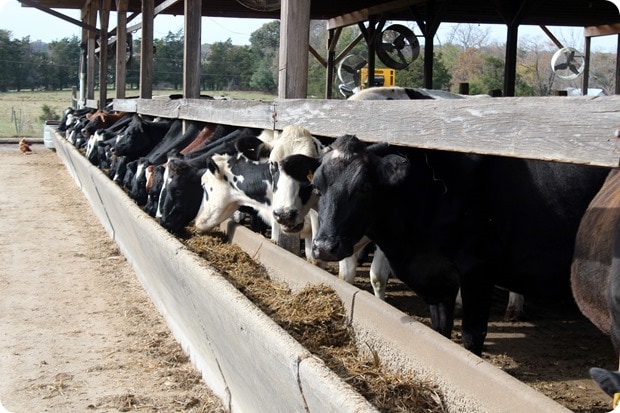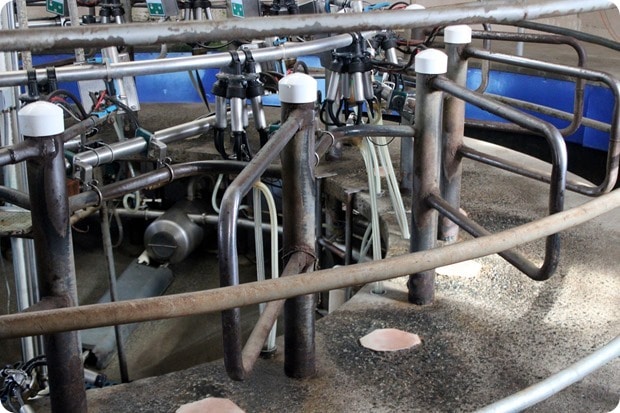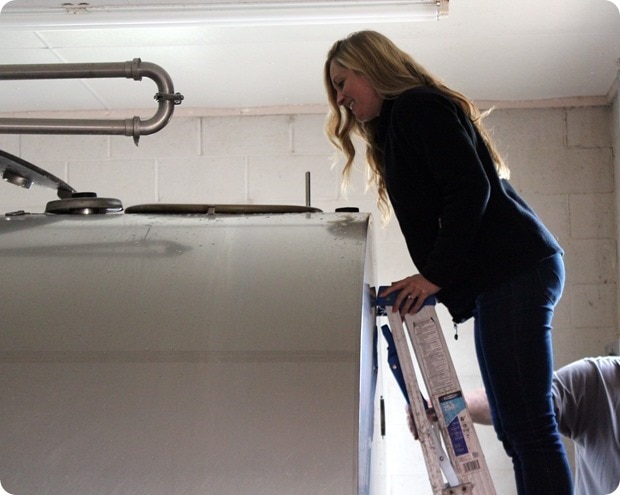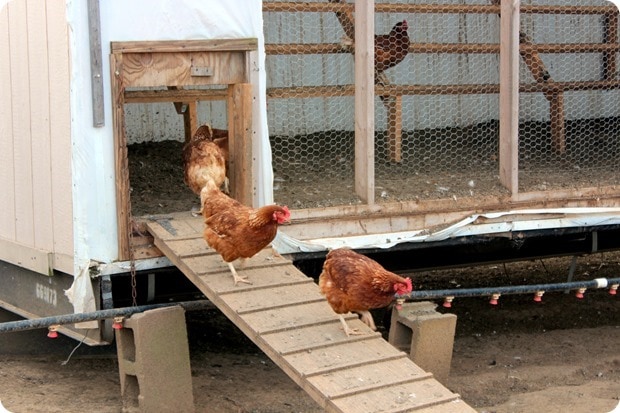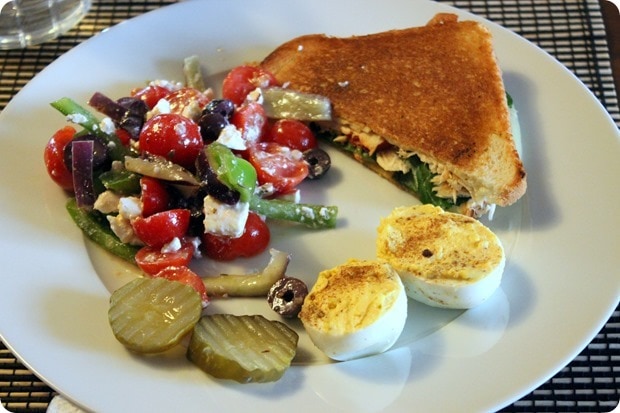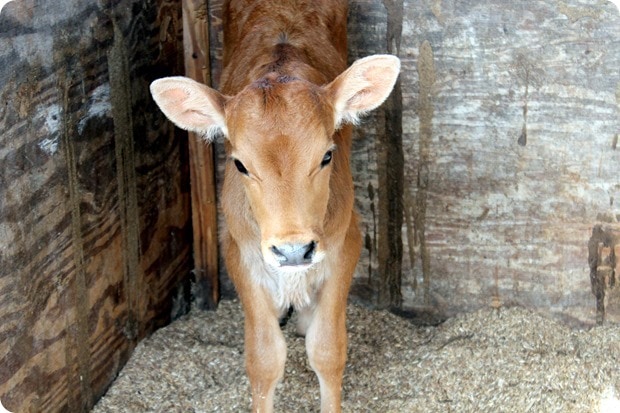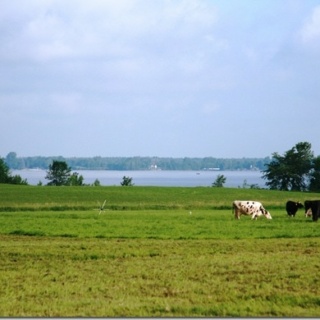Earlier this week, I had the wonderful opportunity to travel to Elon, North Carolina to tour Reedy Fork Farm, a 500 acre certified organic dairy and feed farm.
Reedy Fork (love that name) is a sixth generation farm, and was actually originally a tobacco farm! It became a dairy farm in the 1950’s and transitioned to a certified organic dairy farm in 2007; they are now a proud member of the Organic Valley Cooperative, who invited me on this trip. A huge thank you to them for covering my trip expenses and for sponsoring this post!
The farm is owned by George Teague, who operates the farm alongside his son, nephew, and his wife, Cherry.
Joining me on the tour was Carrie from Organic Valley and fellow blogger Lisa Leake from 100 Days of Real Food; her husband, Jason, and their children joined as well. Her blog is worth checking out if you haven’t seen it before – a great resource on eating real, unprocessed food in a realistic, non-complicated way. I went to get coffee with Lisa and Jason before the tour and loved when all three of us ordered lattes with whole milk. These are my people!
It was wonderful hearing more about the farm from George and Cherry, who graciously opened up their home and farm to us for this tour. Our first order of business was a hay ride (so fun!) around their property while learning more about why they transitioned to organic.
George told us that the #1 reason they went organic was because of how much healthier it is for not only the animals but also his family. He said he remembers spraying chemicals back in the day and wondering how many years he had taken off his life. When he was conventional, he didn’t want his children to be around the farm because he knew the chemicals were really dangerous for them. George’s wife Cherry and daughter Hayley had long known the many benefits of organic food and products, and encouraged George to explore the possibilities of making Reedy Fork Organic, but he was skeptical and didn’t think it could be done. Reluctantly, George said he finally agreed to take a trip to Pennsylvania and Maryland to see how “those crazy organic people” did it. What he saw convinced him, and he came back home with hope and a new respect for the organic way of farming.
Since going organic, virtually all of their cows’ health issues have disappeared, and so have those of his son. He said they spend more money on their personal pets at the vet now than they do on their cows!
Being certified organic means:
- Utilization of natural means of pest control/prevention. Absolutely no use of prohibited materials (antibiotics, growth hormones, etc.)
- Maintaining low levels of environmental pollution.
- Not using any GMOs (Genetically Modified Organisms)
- Adhering to a certain standard of animal control, focusing on humane treatment. Cows must be at pasture for a minimum of 120 days per year, and get at least 30% of their dry matter intake from grass.
An organic cow’s diet consists of grass and a little bit of grain (corn, barley, etc. — about 5 lbs., if that). In the winter, they eat stored forage: either haylage (chopped, fermented hay), or round bales of hay (longer-stemmed), plus grain (anywhere from 5-15 lbs. per day per cow). The Teagues said their cows receive about 90% grass and 10% organic grains. A conventional diet, on the other hand, would consist of corn silage (chopped, fermented corn) and grain (corn and soy). Some haylage may also be mixed in, but the cows are not out on grass. Eating too much grain is not good for the cows as it makes their stomach pH too acidic, leading to health problems!
Organically managed cows must also be given daily access to the outdoors during the non-grazing season – e.g. shade, shelter, fresh air, direct sunlight, exercise areas. The Teague’s cows are at pasture almost every day of the year, weather permitting.
Some organic facts:
- There is a three year transition of land from non-organic to organic.
- 95% of ingredients (excluding water and salt) have to be organic in order to label something “organic.” (And the remaining 5% must be proven that you attempted to make it organic, but could not!)
- Only about 0.5% of all U.S. cropland and pasture were certified organic in 2005 — about 4 million acres.
- There’s a HUGE difference between “natural” and “organic” — in fact, “natural” on a label means absolutely nothing!
Cows have to be fed and treated to meet organic standards for a full 12 months before their milk can be sold as organic. This means 100% organic feed! In addition to selling their milk through Organic Valley, the Teagues also run an organic feed business to make extra money.
Did you know that the average life expectancy for a conventionally raised cow is only 4 years, while for an organically raised cow it is 10 years? George said that since going organic, their cows have lived MUCH longer. When the cows are no longer milkable, they are used for organic meat, which the Teagues also sell (and eat themselves).
The Teagues have around 100 Holstein and Holstein/Jersey cross cows, and they milk their cows twice per day – morning and night. The amount of milk varies depending on where the cows are in their cycle, but organic farms get about 5 to 6 gallons of milk per day per cow (from two milkings). Non-organic farms get anything from 6 to 10 gallons.
I spy milk (this large container is where they store it before pickup)!
The Teagues also sell organic eggs. Hello, chickens!
George and Cherry invited us to have lunch with them before finishing up the tour. We were treated to an organic feast using some of the bounty from their farm – deviled eggs, chicken and cheese panini sandwiches, and beautiful fresh salads. Delicious! We were also treated to unpictured brownies, which were amazing. 🙂
It was such a pleasure to have the opportunity to meet George and Cherry and to see firsthand how going organic has changed their farm for the better. This trip reminded me why it matters to vote with our dollars and buy organic food as often as possible!
What foods do you buy organic? I make a conscious effort to always purchase organic milk, eggs, and meat, if available. For produce, I generally go by the dirty dozen, factoring in when it is available/makes sense for our budget.
Have a great day, my friends!


